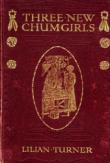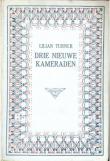AustLit
Latest Issues
Publication Details of Only Known VersionEarliest 2 Known Versions of
Works about this Work
-
The New Chum Girl : Upending Colonial Clichés in Lilian Turner's Emigration Novel
2016
single work
criticism
— Appears in: Journal of Australian Studies , February vol. 40 no. 1 2016; (p. 45-58)'This essay analyses Lilian Turner's Three New Chum Girls (1910) to show how settler authors played with colonial clichés as part of a critical reaction to shifting imperialist and nationalist ideologies at the turn of the century. In particular, Turner redefines the derogatory colonial term “new chum”—commonly used to describe a recent emigrant in the settler colonies—to suggest what the welcome of new arrivals ought to be like. Yet if her deliberate reworking of stereotypes consequently contains an element of wish-fulfilment, the narrative also offers a startlingly stark portrayal of settler life. Emigration, Turner contends in the novel, is neither easy nor a solution to problems at home. Nor does settler Australia provide a convenient space for fortune-seeking sojourns. Turner thus dismantles two clusters of common clichés: emigration as a pat ending in fiction and settlers' return to the homeland as an equally expedient plot twist. The self-irony that runs through much of her intertextual rewriting of both metropolitan fiction and male-coded settler writing reveals how emigration and return were being imagined and written about differently in the settler colonies and how Turner was utilising the exposure of false expectations to promote her vision of a welcoming settler community.'
Source: Abstract.
-
Untitled
1910
single work
review
— Appears in: The Australian Town and Country Journal , 19 October vol. 81 no. 2124 1910; (p. 55)
— Review of Three New Chum Girls 1910 single work novel
-
Untitled
1910
single work
review
— Appears in: The Australian Town and Country Journal , 19 October vol. 81 no. 2124 1910; (p. 55)
— Review of Three New Chum Girls 1910 single work novel -
The New Chum Girl : Upending Colonial Clichés in Lilian Turner's Emigration Novel
2016
single work
criticism
— Appears in: Journal of Australian Studies , February vol. 40 no. 1 2016; (p. 45-58)'This essay analyses Lilian Turner's Three New Chum Girls (1910) to show how settler authors played with colonial clichés as part of a critical reaction to shifting imperialist and nationalist ideologies at the turn of the century. In particular, Turner redefines the derogatory colonial term “new chum”—commonly used to describe a recent emigrant in the settler colonies—to suggest what the welcome of new arrivals ought to be like. Yet if her deliberate reworking of stereotypes consequently contains an element of wish-fulfilment, the narrative also offers a startlingly stark portrayal of settler life. Emigration, Turner contends in the novel, is neither easy nor a solution to problems at home. Nor does settler Australia provide a convenient space for fortune-seeking sojourns. Turner thus dismantles two clusters of common clichés: emigration as a pat ending in fiction and settlers' return to the homeland as an equally expedient plot twist. The self-irony that runs through much of her intertextual rewriting of both metropolitan fiction and male-coded settler writing reveals how emigration and return were being imagined and written about differently in the settler colonies and how Turner was utilising the exposure of false expectations to promote her vision of a welcoming settler community.'
Source: Abstract.





